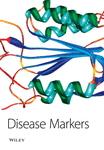Emerging Role of Endothelial and Inflammatory Markers in Preeclampsia
Abstract
Objectives: Endothelial disturbance and excess inflammatory response are pathogenic mechanisms in pre-eclampsia (PE). Authors determine the clinical diagnostic role for thrombomodulin (TM), plasminogen activator inhibitor-1 (PAI-1) as endothelial markers and C-reactive protein (CRP), and interlukin-6 (IL-6) as inflammatory markers when tested independently or in combinations.
Materials and methods: We conducted a retrospective study in a cohort of 185 women grouped as 80 women with PE, 55 normotensive pregnant and 50 healthy non-pregnant. Plasma levels of TM, PAI-1, CRP and IL-6 were examined using enzyme linked immunosorbent assays.
Results: Median levels and the positivity rates for the investigated markers were higher in PE as compared to the other groups (P < 0.0001). Using linear regression analysis, the investigated markers were significantly correlated regarding healthy nonpregnant vs PE or normotensive pregnant vs PE. The sensitivity of PAI-1 was the highest (98%) among the tested biomarkers. Combination between the investigated markers revealed absolute sensitivity (100%) and reliable specificity especially when PAI-1 was combined with CRP at 83% specificity.
Conclusions: Investigated endothelial and inflammatory markers revealed sensitive diagnostic test for PE. However, coupled combination between PAI-1 with CRP showed superior both sensitivity and specificity which represent a promising new approach for detection of PE.




